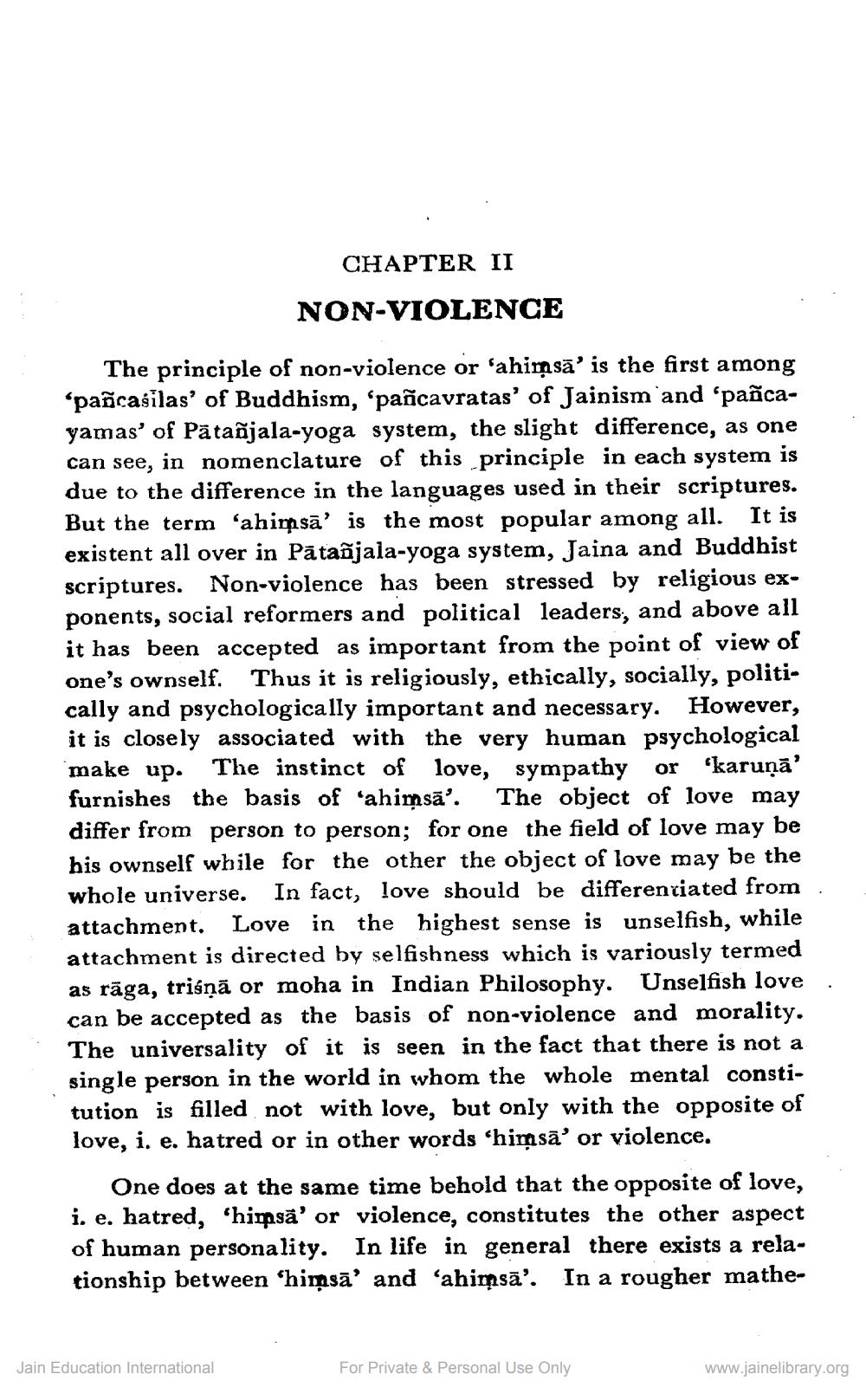________________
CHAPTER II NON-VIOLENCE
The principle of non-violence or 'ahiņsā' is the first among 'pañcasilas' of Buddhism, 'pañcavratas' of Jainism and 'pañcayamas' of Patañjala-yoga system, the slight difference, as one can see, in nomenclature of this principle in each system is due to the difference in the languages used in their scriptures. But the term 'ahirpsā' is the most popular among all. It is existent all over in Pātañjala-yoga system, Jaina and Buddhist scriptures. Non-violence has been stressed by religious exponents, social reformers and political leaders, and above all it has been accepted as important from the point of view of one's ownself. Thus it is religiously, ethically, socially, politically and psychologically important and necessary. However, it is closely associated with the very human psychological make up. The instinct of love, sympathy or "karuņā' furnishes the basis of 'ahimsā'. The object of love may differ from person to person; for one the field of love may be his ownself while for the other the object of love may be the whole universe. In fact, love should be differentiated from attachment. Love in the highest sense is unselfish, while attachment is directed by selfishness which is variously termed as rāga, trisņā or moha in Indian Philosophy. Unselfish love. can be accepted as the basis of non-violence and morality. The universality of it is seen in the fact that there is not a single person in the world in whom the whole mental constitution is filled not with love, but only with the opposite of love, i. e. hatred or in other words 'himsā' or violence.
One does at the same time behold that the opposite of love, i. e. hatred, 'himsā' or violence, constitutes the other aspect of human personality. In life in general there exists a relationship between 'hipsā' and 'ahimsā'. In a rougher mathe
Jain Education International
For Private & Personal Use Only
www.jainelibrary.org




